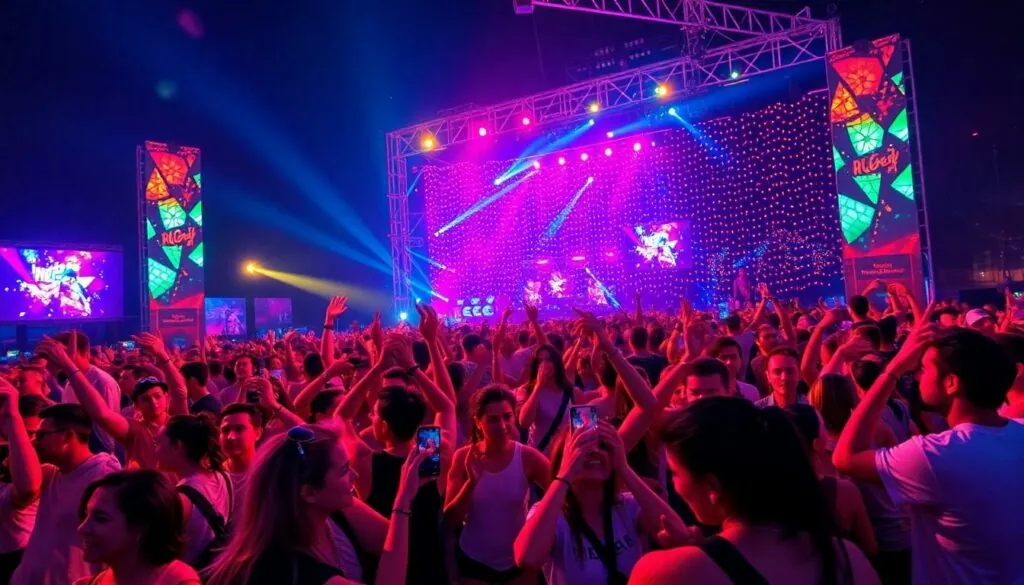Table of Contents
TogglePop music isn’t just a genre; it’s a cultural phenomenon that’s taken over the airwaves and playlists around the globe. With catchy hooks and infectious beats, it’s no wonder people can’t help but dance like nobody’s watching (even when they totally are). But what makes pop music so irresistible?
The Appeal of Pop Music
Pop music captivates listeners with its infectious sound and broad accessibility. Various elements contribute to its widespread popularity, connecting with diverse audiences worldwide.
Catchy Melodies and Themes
Catchy melodies define the pop music genre. Artists create hooks designed to stay in listeners’ heads, leading to repeated plays. These melodies often incorporate infectious beats that encourage spontaneous dance. Themes in pop music center around love, friendship, and celebration, resonating universally. Such relatable subjects draw in audiences across different backgrounds.
Relatable Lyrics
Relatable lyrics enhance pop music’s charm. Many songs feature narratives reflecting everyday experiences and emotions. Singers often express feelings of heartbreak, joy, or empowerment, allowing listeners to feel understood. This connection fosters a sense of intimacy between the artist and the audience. Listeners often identify with the stories, further solidifying pop music’s role in their daily lives.
The Role of Social Media in Pop Music
Social media profoundly influences the popularity of pop music. Platforms play a pivotal role in discovering and promoting new artists, ensuring fresh sounds reach millions.
Platforms Shaping Trends
TikTok, Instagram, and YouTube drive trends in the music industry. TikTok’s short-form video format allows users to create challenges and dances to catchy songs, leading to viral hits. Instagram enables artists to engage directly with fans, sharing creative content that reaches a global audience. YouTube serves as a primary platform for music videos, with billions of views contributing to an artist’s visibility and brand. Popularity often stems from the algorithmic recommendations these platforms provide, creating an environment where emerging artists can thrive alongside established names.
Influencer Impact
Influencers significantly impact audience perceptions of pop music. They often share their favorite tracks, shaping their followers’ musical tastes. Collaborations between artists and influencers amplify reach, fostering a sense of authenticity. By endorsing new singles or albums, influencers can create buzz that propels a song to success. Engagement metrics highlight how influential figures can drive trends and reach listeners who may not otherwise discover the music. Their roles as tastemakers further bridge the gap between artists and fans, making pop music more accessible than ever.
The Influence of the Music Industry
The music industry significantly shapes pop music’s popularity through strategic efforts.
Marketing Strategies
Marketing strategies play a crucial role in promoting pop artists. Record labels invest heavily in advertising campaigns across platforms. Targeted ads on social media reach specific demographics, drawing in diverse audiences. Partnerships with brands create synergistic opportunities that enhance visibility. Events like award shows build anticipation and excitement around upcoming releases. Additionally, strategic release schedules coincide with holidays or cultural events to maximize impact. All these efforts promote artists globally, transforming them into household names.
Collaborations and Features
Collaborations and features foster cross-pollination in the music scene. Artists from different genres come together, creating fresh sounds that attract various listeners. High-profile collaborations generate buzz and draw fan bases together. Features on popular tracks introduce lesser-known artists to wider audiences, increasing their following. Successful partnerships often lead to viral moments that significantly amplify reach. Industry insiders recognize these collaborations as essential tools in sustaining relevance in a fast-paced market.
Cultural Impact and Global Reach
Pop music’s cultural impact and global reach play critical roles in its enduring popularity. The genre’s appeal comes from its ability to resonate with audiences from diverse backgrounds.
Diversity in Pop Music
Diversity in pop music enriches its artistic expression. Artists frequently incorporate various genres, languages, and cultural elements into their work. For example, K-pop has gained immense popularity thanks to its integration of different styles, which attracts a wide range of listeners. Latin pop also showcases the genre’s adaptability, reaching audiences worldwide. This rich tapestry of influences allows pop music to connect with individuals from various cultural settings.
Cross-Genre Influences
Cross-genre influences enhance the evolution of pop music. Artists collaborate across genres, fusing elements from hip-hop, rock, and electronic music, creating unique sounds that attract varied audiences. Collaborations like those between Ed Sheeran and Travis Scott exemplify this blending of styles. By experimenting with different musical backgrounds, pop artists can tap into new listener bases. The ability to innovate keeps the genre fresh and relevant in an ever-changing music landscape.
Pop music’s widespread appeal stems from its ability to connect with listeners on multiple levels. Its catchy melodies and relatable themes resonate deeply, making it a staple in people’s lives. The genre’s adaptability and incorporation of diverse influences ensure it remains fresh and engaging.
Social media plays a crucial role in promoting pop music and creating a community around it. Platforms like TikTok and Instagram allow fans to engage with artists directly, fostering a sense of intimacy and connection. This dynamic interaction enhances the genre’s popularity while ensuring artists stay relevant.
As pop music continues to evolve, its cultural impact grows stronger. The genre’s ability to transcend boundaries and incorporate various styles ensures its place as a dominant force in the global music landscape.





